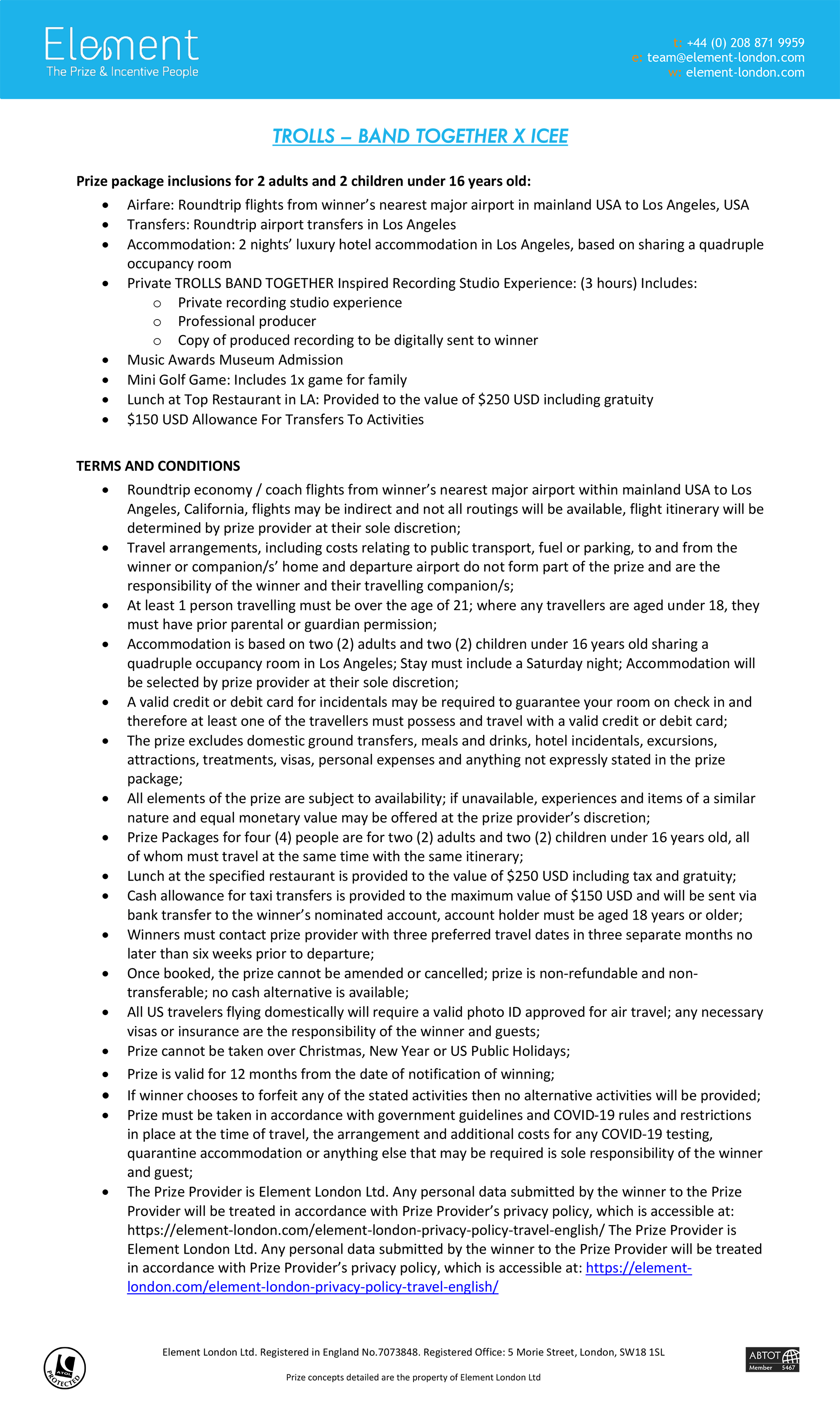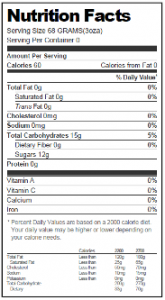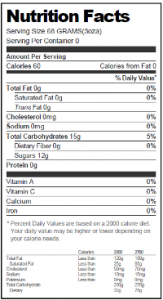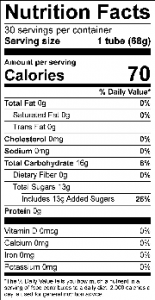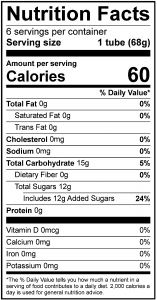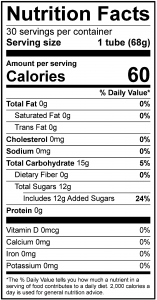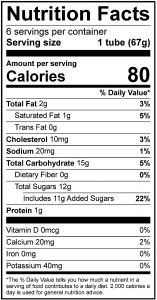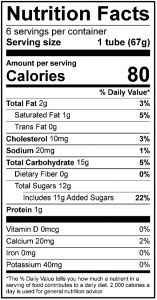COPPA Compliance & Marketing Code of Practice
We are proud of our brands. They provide fun and enjoyment as treats or refreshment, and are valued for their functional benefits. They can be enjoyed as part of a balanced diet and lifestyle.
We provide choice by offering variety and through innovation.
We encourage responsible consumption, as this is central to consumers continuing to enjoy our brands.
Our consumers are at the heart of our business. We are committed to listening to them and acting responsibly in their interests and have done this successfully for generations.
This Marketing Code of Practice ensures we continue to meet our responsibilities to our consumers.
Supporting sensible consumption and balanced life style
Copy, sound and visual presentation will accurately represent all material dimensions of products advertised, including taste, size, content and nutrition and health benefits.
All our advertising will be truthful, accurate and well substantiated. Health benefit claims will have a sound nutritional basis and comply with applicable government regulations.
Our advertising will reflect moderation in consumption and portion sizes appropriate to the social and cultural setting portrayed.
Our advertising will never portray or endorse inappropriate or over consumption.
Unless a food product has been nutritionally designed as a meal replacement, it will not be portrayed as such.
In every country where we advertise we will be attentive to local, cultural, political and religious sensitivities and always market within the highest common denominator of any existing regulatory, advertiser, agency and broadcaster guidelines.
We will apply these guidelines to all forms of media including print, broadcast and cable television, radio, video, telephone, point-of-sale, online advertising, other internet activities and packaging.
This code is reviewed annually by the group's President of Commercial Strategy and put before the company's Food Issues Strategy Group for policy approval.
With particular reference to marketing to children:
We will always take into account the level of knowledge, sophistication and maturity of the people we are advertising to. Younger children have a limited capacity for evaluating the credibility of information they receive. They also may lack the ability to understand the nature of the personal information they disclose on the Internet. We recognise and will act on the special responsibility we have to protect children from their own vulnerabilities. Therefore, we will not advertise where children under the age of eight are likely to be the majority of the audience. Eight years is generally accepted as the age at which children are viewed as being able to comprehend what an advertisement is seeking to achieve and to make judgements accordingly. (Also see: advertising to children)
We will not advertise during or adjacent to a programme if the content of our advertisement is derived from or associated with that programme. For example, we will not use broadcast or print media personalities (live or animated) to sell products, premiums or services in a way that obscures the distinction between programme or editorial content and commercial promotion. Commercials and advertisements featuring characters from programmes or publications primarily directed to children should not be adjacent to programmes or articles in which the same personality or character appears.
We will not show children under eight years in advertisements and promotions aimed at children.
We will not have any visual reference of children under eight years on company-owned vending equipment.
Our advertising will not misrepresent the potential benefits from the consumption of a product such as status or popularity with peers, sporting success or intelligence.
Our advertising to children will not create a sense of urgency or price minimisation.
We will use language and visuals that are clearly understandable in advertising and promotions, especially where it relates to the likelihood of winning a prize or being included in a club of any kind.
Where we have websites with children's content, we will not knowingly link to pages of other sites that do not comply with our standards. We will not seek to gain the address or other personal details of the child and will not e-mail children. We will use this area of any site we have to remind and encourage parents to check and monitor their children's use of online activities regularly.
We will not use visuals, language or messages that encourage children to pester parents or others to buy products.
Our advertising will support the role of parents and other appropriate adult role models in guiding and deciding what children should eat and drink.
We will take great care when using any form of fantasy, including animation, not to exploit a child's imagination in a way that can encourage poor dietary habits or less than sensible consumption.
When using fictitious or real characters to promote our products, which are in the treat and occasional consumption range, we will not use such characters to promote inappropriate consumption.
Our products will be represented in a way to encourage the sound use of the product, with a view towards proper nutritional development of the child and development of good nutritional practices.
We will, where appropriate, capitalise on the potential of advertising to influence behaviour by developing advertising that supports positive and beneficial social behaviour including sensible consumption, friendship, kindness, justice, honesty, generosity and respect of others, and in so doing expose children to the benefits of constructive advertising approaches.
Prior to release, all advertisements and promotions to children will be reviewed at an early stage for the appropriateness of the activity and then checked against this code before being signed off by business unit general managers. In addition, there will be a periodic review of business unit activity by regional and global management to ensure that interpretation of the code is aligned locally, regionally and globally.
Sources/references
This code has been developed with reference to the following:
With particular reference to Marketing to Children:
Self-Regulatory Guidelines for Children's Advertising, Children's Advertising Review Unit (CARU), http://www.caru.org/guidelines/index.asp (accessed July 2004).
Code for Advertising to Children, Australian Association of National Advertisers (AANA) recommendations, http://www.aana.com.au/pdfs/A2CCode.pdf (accessed July 2004)
Report of the APA Task Force on Advertising and Children, American Psychological Association (APA). February 20th, 2004. http://www.apa.org/releases/childrenads.pdf (accessed July 2004)
General references:
International Chamber of Commerce Framework for Responsible Food and Beverage Communications, International Chamber of Commerce, http://www.aana.com.au/3_self_regulation/3_2_ICC.html (accessed July 2004)
Principles of Food and Beverage Product Advertising, Confederation des industries agro-alimentaires de I'UE - the confederation of EU food and drink industry (CIAA) http://www.gwa.de/fileadmin/download/Kommbranche/CIAA_Principles.pdf (accessed July 2004)
World Federation of Advertisers (WFA): www.wfanet.org
European Advertising Standards Alliance (EASA):
http://www.easa-alliance.org/about_easa/en/about.html


